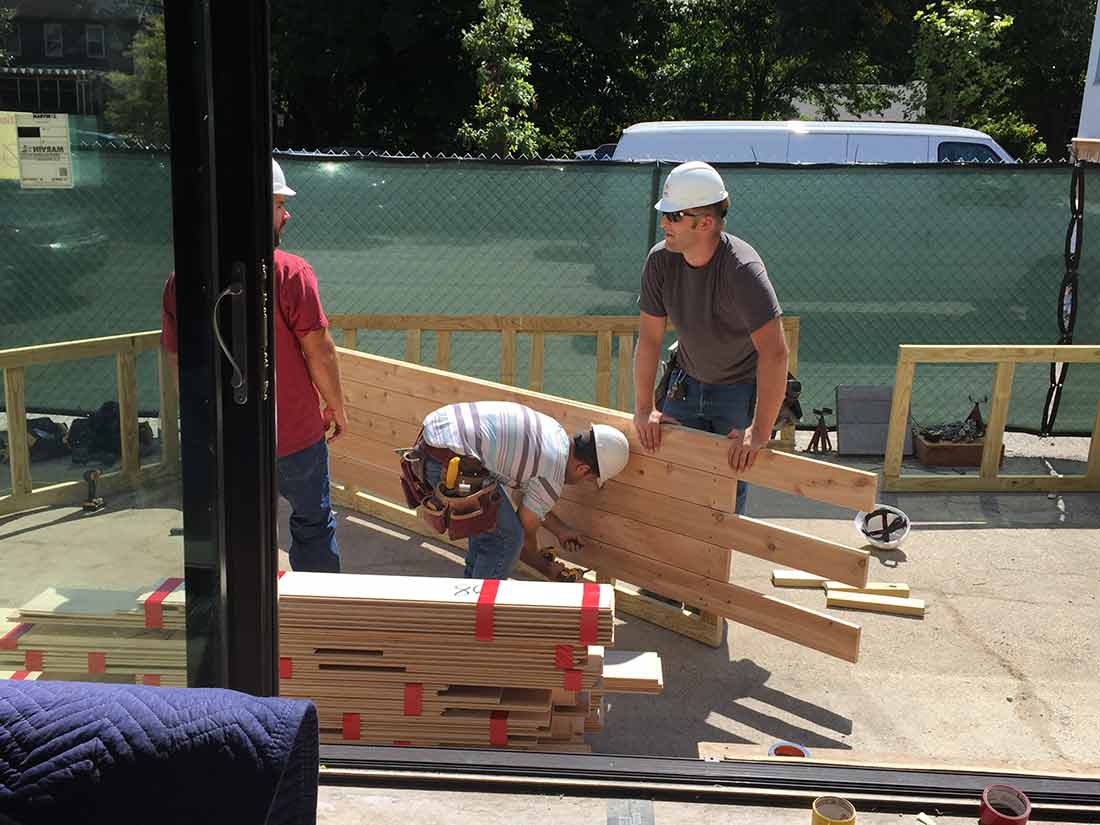By Lakshmi Chandrasekaran
The house came down piece by numbered piece. In mid-September, the House by Northwestern (HBN) team dismantled the entire home they built over the summer, and FedEx-ed it off to Denver.
The solar-powered sustainable house, Enable is an official entry in the eighth Solar Decathlon competition, sponsored by the United States Department of Energy. Northwestern University will be participating for the first time.
The Solar Decathlon features a total of 11 collegiate teams that includes European teams from Switzerland and Netherlands. The teams compete for a total of $2 million in prize money with the first place team receiving $300,000.
The NU team geared up to the challenge and designed a 994-square-foot house entirely powered by solar energy for the showcase this October in Denver. The competition started in 2002 and is held once every two years. Some of the teams this year are veterans of multiple competitions. And the houses will be open for public tours, showcasing each team’s vision in bringing to life their fully functional solar-powered houses, over two long weekends from October 5- October 9, 2017, and October 12- October 15, 2017.
“This is expected to attract tens of thousands of visitors,” says Manasi Kaushik, a member of the Communications team at HBN and a graduate student at the Medill School of Journalism at Northwestern.
The Solar Decathlon entries compete in 10 categories such as innovation, architecture, engineering, market potential and communications etc. “Six of them juried, so there will be four jury members to convince for each one,” says Lila Reynolds, an undergraduate student at Medill School of Journalism and also a member of HBN’s communications team.
Not only will the teams be tested on the technical aspects but the evaluation will include hosting dinner parties and game nights in the House to “show how functional it is,” adds Reynolds.

Kaushik is the only graduate student in the HBN team that comprises solely of undergraduate students, from civil, industrial, manufacturing, and design engineering programs. Rotating students teams – with 51 students in all – have been involved in conceptualizing and creating the house over the past two years.
And then, the disassembly. The whole process of taking apart had to be done so meticulously with every wooden panel numbered to denote where they belong, “so that they can be put back in the same place when they are reconstructed in Denver,” says Reynolds, amidst the sounds of a drill, to remove the screws. The pieces have been delivered by FedEx in Denver, and the team is busy assembling the house for the competition at the time of writing. Then it will take another week to take it apart again after the competition. After returning from Denver, the house will be reassembled and set up for sale in Evanston.

Who will buy this house?
“There are many older adults here in Evanston, North Shore and there’s a housing need that needs to be met – helping them live in a house for the rest of their lives so that they don’t have to move anywhere,” says HBN faculty director Prof. Dick Co , a chemistry professor at Northwestern. HBN targets the baby-boomer generation, who constitute nearly one-fifth of our nation’s population.
HBN has already lined up a couple of interested buyers. But how did HBN manage to attract buyers, when the common public conception is that investing in renewable energy and sustainability is a much more expensive affair than simply buying a conventional house?
“You buy a non-energy efficient home and then find out that, to be comfortable, you have to pay $400 a month for heating or cooling. Compare that to building a new house – spending the money upfront, knowing that you will save that money by building an energy-efficient home. You can maybe use the savings to get a more favorable mortgage to have nicer finishes,” says Co, explaining their pitch to the baby boomers to debunk the myth of sustainability.
One of the main perks for HBN would be no utility bills because HBN has roof-integrated solar panels. “Based on our energy modeling, the 6.5-kW solar panel array generates 110% of our energy needs, meaning more energy than we need including driving an electric vehicle 25 miles a day,” says Co. He hopes to start a trend of people increasingly wanting to live in homes like Enable – beautiful, high-performing and cost-effective from the homeowner’s point of view, all the while being environmentally friendly. Another added advantage is that such a house could be built in weeks as opposed to taking months, as the team is proving in Denver right now.
Co calls himself a firm follower of seeing is believing, “The more we see a Tesla car the more we want it!” In order to facilitate more awareness about sustainable homes, HBN plans to make House accessible to the public – even after the sale – by announcing tour dates as part of the Green Home tours and involve the community belonging to universities, donors, trustees, sustainable groups etc.
Besides looking forward to the House sale, what would be HBN’s piece de resistance? Winning at the Solar Decathlon, of course!
“In some sense, I feel, we have won already. If you invest in the community and , invest in students you always win. We have really trained students to be the best engineers and designers that they can be, prepared them to be part of a dynamic workforce,” adds a confident Co. Armed with tremendous experience with building a renewable energy efficient home and knowledgeable student workforce, some of them who have graduated and in the job market, Co hopes that as a community, members of the HBN would become more involved in better building practices and projects in Illinois, which are oriented towards sustainability.
So, here’s wishing the HBN team all the best for the competition!


